Diodes, essential components in modern electronics, play a crucial role in countless devices by allowing current to flow in one direction and blocking it in the other. Beyond their rectifying properties, diodes are vital for power conversion, signal demodulation, voltage regulation, and protecting circuits from voltage spikes.
Why Are Diodes Important: This article explores the advantages of diodes: why are diodes important and their indispensable role in today’s technology?
What Is A Diode?
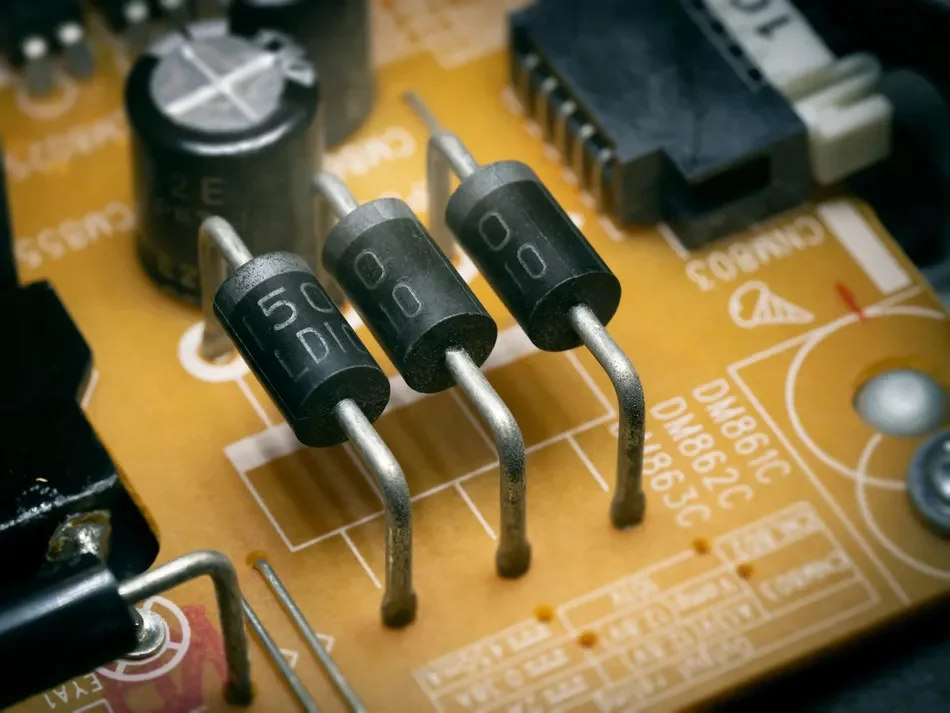
A diode is a semiconductor device that allows current to flow in only one direction, acting as a one-way valve for electrical current. This property makes diodes essential in many electronic circuits. The development of diodes began in the early 20th century with crystal detector diodes used in radios, followed by John Ambrose Fleming’s vacuum tube diode in 1904.
The 1950s saw the advent of semiconductor diodes made from silicon and germanium, enhancing efficiency and reliability. Diodes are crucial in modern electronics due to their versatility and efficiency. They convert AC to DC in power supplies, regulate voltage, protect circuits from spikes, and emit light in LEDs.
Their reliability and performance make them essential in consumer electronics, telecommunications, industrial systems, and renewable energy. As technology evolves, diodes continue to be central to electronic innovation, highlighting their lasting importance.
Structure Of A Diode
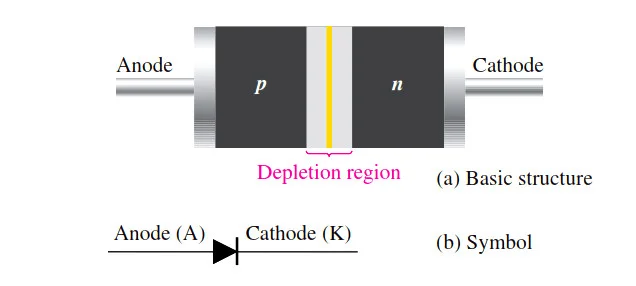
The basic operation of a diode hinges on its structure, which consists of a P-N junction formed by joining P-type and N-type semiconductor materials. The P-type material is doped with acceptor impurities, resulting in an abundance of holes, while the N-type material is doped with donor impurities, producing an excess of electrons.
Common materials used for diodes include silicon and germanium, chosen for their favorable electrical properties. At the interface of the P-type and N-type layers, the P-N junction is created, which is crucial for the diode’s function.
When a voltage is applied, the P-N junction allows current to flow in one direction while blocking it in the opposite direction, making the diode act as a one-way valve for electrical current. This directional control of current flow is fundamental to the diode’s role in electronic circuits.
How A Diode Works?
A diode allows current to flow in only one direction due to its P-N junction. When forward-biased (positive voltage to the P-type and negative to the N-type), the depletion region shrinks, permitting current flow.
In reverse bias (positive voltage to the N-type and negative to the P-type), the depletion region expands, preventing current flow. This selective conductivity is crucial for applications like rectification, voltage regulation, and signal processing.
Advantages Of Diode: Why Are Diodes Important
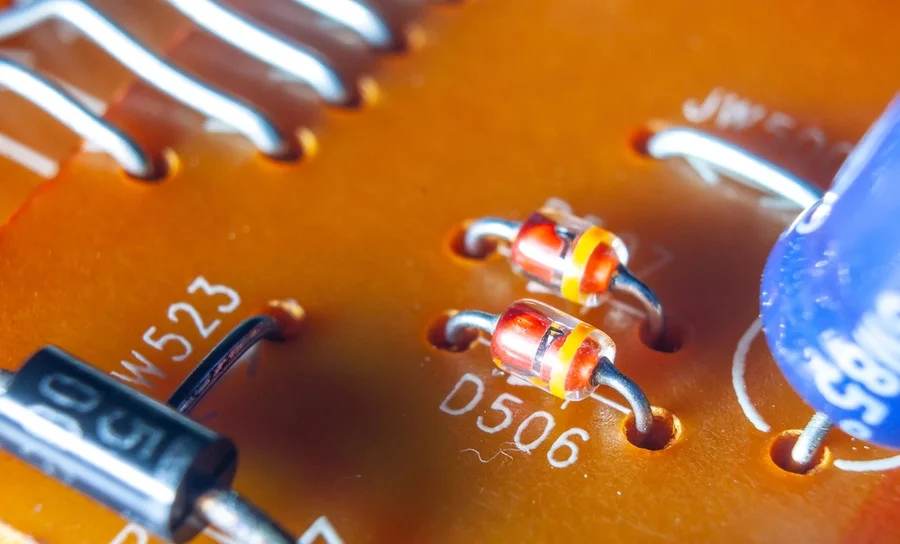
Diodes play crucial roles in various electronic circuits, each type offering specific advantages tailored to its intended application.
Standard Rectifier Diode
Standard Rectifier Diodes are renowned for their high efficiency in converting alternating current (AC) to direct current (DC). They find extensive use in power supplies across a spectrum of electronic devices. Their ability to efficiently convert AC to DC ensures stable power delivery, making them indispensable in many electrical systems.
Zener Diode
Zener Diodes are prized for their unique ability to regulate voltage. They maintain a constant voltage across their terminals, making them invaluable for voltage regulation purposes. Additionally, they serve as protective components, safeguarding circuits from overvoltage conditions by shunting excess voltage away from sensitive components, thus preventing damage.
Light Emitting Diodes (LEDs)
Light-emitting diodes (LEDs) revolutionized lighting technology with their low energy consumption, which reduces power consumption and lower operating costs. Their long lifespan and durability further enhance their appeal, making them ideal for a wide range of applications from indicator lights to backlighting in displays.
Schottky Diode
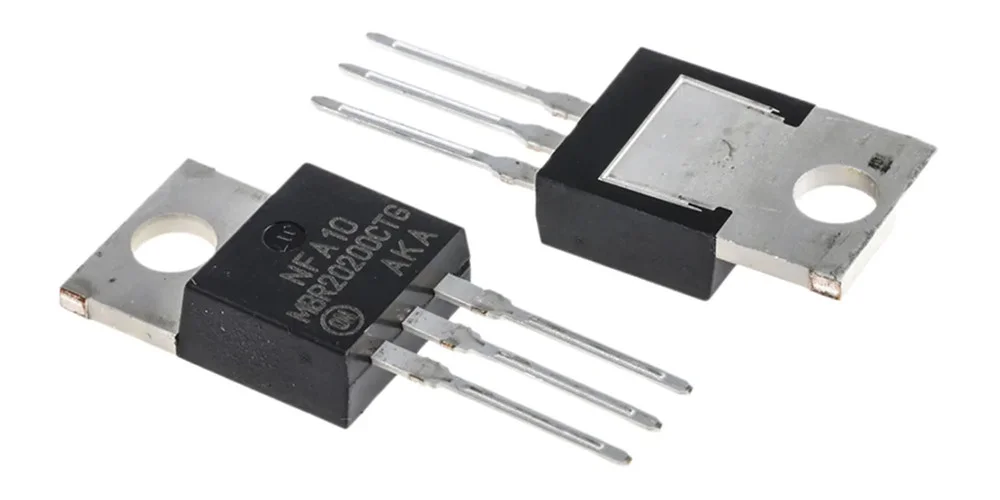
Schottky Diodes are distinguished by their low forward voltage drop, which results in minimal power loss during operation. This characteristic makes them particularly well-suited for high-speed switching applications where fast response times are critical. Their ability to swiftly switch between conducting and non-conducting states makes them indispensable in applications demanding rapid signal processing.
Photodiode
Photodiodes excel in light detection and solar energy conversion applications. They generate electrical currents in response to incident light, making them invaluable in sensors and communication systems where light detection is essential. Their ability to convert light energy into electrical signals enables their use in diverse applications, including optical communication and light sensing.
Varactor Diode
Varactor Diodes stand out for their variable capacitance, which can be dynamically adjusted by varying the applied voltage. This feature finds extensive use in radio frequency (RF) design and tuning circuits, where precise control over capacitance is essential for frequency modulation and tuning.
Varactor diodes play a crucial role in RF communication systems, ensuring optimal signal transmission and reception by facilitating frequency adjustment and tuning.
In summary, each type of diode offers distinct advantages suited to specific applications, ranging from efficient power conversion and voltage regulation to fast switching and light detection, catering to diverse needs in modern electronic systems.
General Advantages Of Diode
Diodes, regardless of their specific type, offer several general advantages that contribute to their widespread use in electronic circuits:
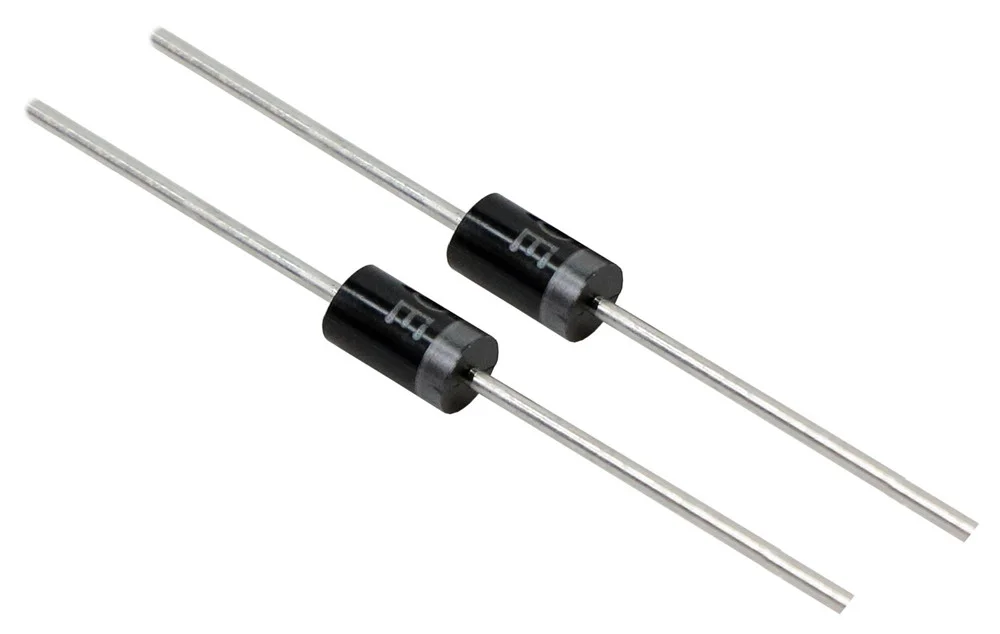
Rectification
Diodes allow current to flow in one direction while blocking it in the opposite direction. This property is essential for rectifying alternating current (AC) into direct current (DC), a fundamental requirement in many electronic devices and power supplies.
Protection
Diodes serve as essential components for protecting circuits from overvoltage, reverse voltage, and excessive current. They act as a barrier against voltage spikes and reverse current flow, safeguarding sensitive electronic components from damage.
Signal Control
Diodes are essential in electronic circuits for controlling signal flow and enabling functions like isolation, mixing, and demodulation. They allow current to pass in one direction, isolating circuits and enhancing reliability. Through their non-linear properties, diodes mix signals, crucial in RF and audio applications.
Additionally, in demodulation circuits, diodes extract original signals from modulated carrier waves. Their versatility and reliability make diodes integral to managing signal paths and ensuring signal integrity in diverse electronic systems.
Voltage Regulation
Certain types of diodes, such as Zener diodes, provide precise voltage regulation, maintaining a constant voltage across their terminals despite variations in input voltage or load conditions. This feature ensures stable voltage levels in electronic circuits, critical for the proper operation of various components.
Switching
Diodes can switch between conducting and non-conducting states rapidly, making them suitable for applications requiring fast switching speeds. This property is crucial in digital logic circuits, where diodes facilitate the implementation of Boolean logic functions and enable the creation of electronic switches.
Efficiency
Diodes typically have low forward voltage drops and minimal power dissipation, leading to high efficiency in energy conversion and signal processing. This characteristic is advantageous in power electronics, where minimizing energy losses is essential for maximizing efficiency and reducing heat generation.
Compactness
Diodes are compact semiconductor devices that can be manufactured in small sizes, making them suitable for integration into densely packed electronic systems and miniaturized devices. Their small footprint contributes to space-saving designs and facilitates the development of portable electronics.
Reliability
Diodes exhibit robust performance characteristics and high reliability over a wide range of operating conditions. Their solid-state construction and absence of moving parts make them resistant to mechanical wear and tear, ensuring long-term stability and durability in electronic systems.
Disadvantage Of Diode
Voltage Drop
Diodes have an inherent forward voltage drop (typically around 0.7V for silicon diodes and 0.3V for Schottky diodes), which can lead to power loss and reduced efficiency, especially in low-voltage applications.
Reverse Breakdown
If the reverse voltage exceeds a diode’s breakdown voltage, it can conduct in reverse and potentially damage the diode or the circuit.
Temperature Sensitivity
Diode performance can vary with temperature changes. High temperatures can increase leakage current and affect the forward voltage drop, impacting the diode’s operation and reliability.
Non-Ideal Characteristics
Real diodes do not have perfect switching characteristics. They exhibit some reverse recovery time, which can limit their use in high-speed switching applications.
Current Handling
Diodes have maximum current ratings, beyond which they can overheat and fail. This limitation requires careful consideration in high-power applications to avoid exceeding the rated current.
Capacitance
Diodes have parasitic capacitance, which can affect their performance in high-frequency applications. This capacitance can introduce unwanted impedance and signal distortion.
Applications Of Diodes
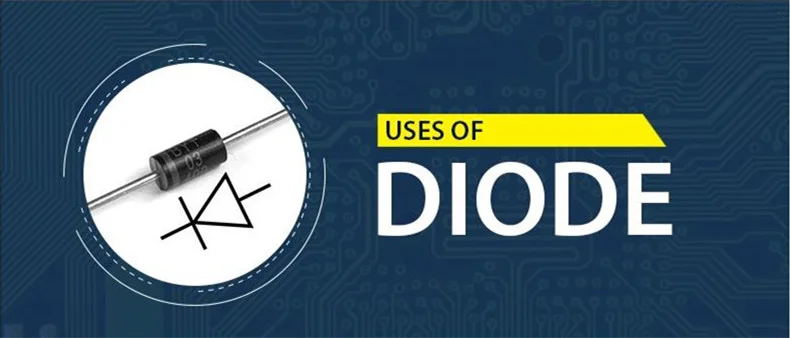
Diodes are incredibly versatile components in electronics, and you’ll find them in a wide range of applications. Here’s how you can use diodes in various scenarios:
Power Rectification: When you need to convert AC to DC, such as in power supplies for electronic devices, diodes are essential. By using a bridge rectifier configuration, you can efficiently change AC from the mains into the DC needed for your gadgets.
Voltage Regulation: If you’re designing circuits that require stable voltage levels, Zener diodes are your go-to solution. They maintain a constant voltage across their terminals, which is particularly useful for creating reference voltages or protecting circuits from voltage spikes.
Signal Demodulation: In communication systems, you’ll often need to extract information from modulated signals. Diodes can demodulate AM (amplitude modulation) and FM (frequency modulation) signals, allowing you to retrieve the original audio or data signals from the modulated carrier waves.
Signal Clipping and Clamping: To protect sensitive components in your circuits from voltage spikes or to set precise voltage levels, diodes can be used for clipping and clamping signals. This helps in maintaining the integrity of your signals and ensuring that they stay within safe voltage limits.
Light Emission: Light Emitting Diodes (LEDs) are perfect when you need low-power, long-lasting light sources. Whether it’s for indicator lights on your devices, displays, or even general lighting, LEDs offer excellent energy efficiency and durability.
High-Speed Switching: For applications requiring rapid switching, such as in digital circuits or RF (radio frequency) applications, Schottky diodes are ideal due to their low forward voltage drop and fast recovery times.
Photodetection: If you’re working on projects that involve light sensing, such as in optical communication systems or light meters, photodiodes are key components. They convert light into electrical signals, enabling the detection and measurement of light intensity.
Varactor Tuning: In RF design, varactor diodes are invaluable for tuning circuits. By varying the reverse voltage applied to these diodes, you can change their capacitance, allowing you to fine-tune oscillators and filters.
Conclusion
In conclusion, diodes are indispensable in electronics, enhancing performance, efficiency, and reliability. They are crucial for rectifying AC to DC in power supplies, regulating voltage, and facilitating signal demodulation, isolation, and protection in communication systems.
Additionally, their versatility in light emission and high-speed switching underscores their importance in both everyday and advanced technological applications. As fundamental components, diodes drive innovation and functionality, cementing their essential role in modern technology.